Shennong – Chinese ‘King Of Medicines’ Who Invented Farming Tools And Herbs For Treating People’s Diseases
A. Sutherland - AncientPages.com - Over millennia, Chinese people have been influenced by different religious, philosophical, and spiritual teachings, including Confucianism, Buddhism, and Taoism. They historically have had a significant impact on the development of Chinese culture and religion.
Shennong (Japanese Shinnnō) in a Japanese hanging scroll (19th century). Public domain
Among many gods worshiped by the Chinese people is Shennong, also known as Shen Nung ("Divine Farmer" or "Divine Husbandman"), a mythological Chinese ruler who has become a deity in Chinese and Vietnamese religious beliefs. He is worshiped as a cultural hero in China and Vietnam and a patron of medicine, forestry, and agriculture, whose beginnings are linked to Shennong.
As Yan Emperor (the Flame Emperor) - the first Emperor of ancient China - Shennong invented farming tools and herbs for treating his people's diseases. He could heal sick people, which significantly contributed to his great popularity. He taught how to cultivate and harvest different species of cereals and introduced the use of buffalo carts.
He is considered one of the wisest divine figures of the Chinese pantheon, alongside immortal deities like Lu Tung-Pin and Han Hsiang-Tzu.
However, even much earlier, the image of Shennong was closely related to the deity Yan-di, who lived around 3,000 BC and was the second of the "Three Kings," believed to be legendary Chinese emperor deities. He's also considered an ancestor of the Yellow Emperor (Huangdi or Huang-ti) (27th century BC), who, it is said, lived in those misty reaches of time before the Shang dynasty. During his reign, Huangdi introduced writing, wooden houses, boats, carts, and the bow and arrow to the Chinese people.
He also taught them how to make ceramics and cook on coals. He founded a marketplace where people could exchange products and goods, which significantly improved the quality of people's lives.
Shennong - the Farmer God, tasting herbs to discover their qualities. Public Domain
Mystic surrounds this legendary deity, and ancient Chinese legend says he was born after his mother first saw a fantastic dragon. Born in the 28th century BC, Shennong was very similar to other mythical creatures. He had a man's face, the body of a snake, the head of a bull, while his nose was that of a tiger.
He was also green, which was the symbol of the color of vegetation.
The legend continues that after the birth of this divinity, nine wells suddenly appeared in the ground. Millet fell from the sky in the form of rain, and Shennong immediately began to plow the land and sow millet, and so, he considered the ancestor of agricultural implements.
In addition, he is also believed to be the first so-called pharmacologist, usually portrayed as an older man in a garment covered with leaves, which he is also holding in his hands. Plants and fruits are hanging from his neck. His other depictions show him as a young man carrying a basket of plants.
With his red whip, Shennong whipped herbs to determine their healing properties and taste qualities.
According to an ancient legend, the inhabitants of the "kingdom of white people" Baimingo gave Shennong a unique animal, 'yaoshou' ("medicinal beast"). If someone got sick, it was only necessary to pat this beast on the back, telling him about the sick, as 'yaoshou' immediately ran away to find the grass he needed for healing.
Shennong is credited with the discovery of tea as a medicinal remedy and a refreshing drink.
He Died Unexpectedly
Death came to Shennong quite unexpectedly. He tried all kinds of herbs to discover their medicinal properties, thus identifying and classifying the different species of plants, both poisonous and medicinal. This process of experimentation led to the creation of Chinese medicine and the discovery of different flavors (sweet, spicy, salty, bitter, and sour).
Tradition has it that he accidentally swallowed a millipede and died because its legs turned into worms. Another version says he was trying to taste seventy poisonous plants on himself.
The beginning of trade is also associated with Shennong because he organized the first bazaars where products were exchanged. In late Chinese mythology, he is also referred to as the patron of medicine, and sometimes he is called Yao-wang ("king of medicines"). His greatest legacy is all the knowledge he acquired and was passed on to humans.
Updated on February 14, 2024
Written by – A. Sutherland - AncientPages.com Senior Staff Writer
Copyright © AncientPages.com All rights reserved. This material may not be published, broadcast, rewritten or redistributed in whole or part without the express written permission of AncientPages.com
More From Ancient Pages
-
 Unique Knife That Belonged To Early Medieval Scribe Unearthed In Poland
Archaeology | Jan 22, 2018
Unique Knife That Belonged To Early Medieval Scribe Unearthed In Poland
Archaeology | Jan 22, 2018 -
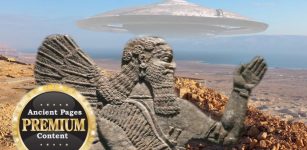 Three Unusual Celestial Journeys And The Chosen Ones Initiated Into The Secrets Of The Gods
Featured Stories | Jul 26, 2021
Three Unusual Celestial Journeys And The Chosen Ones Initiated Into The Secrets Of The Gods
Featured Stories | Jul 26, 2021 -
 Will Star Goddess Astraea Return To Earth With Second Golden Age Or Apocalypse?
Featured Stories | Aug 1, 2020
Will Star Goddess Astraea Return To Earth With Second Golden Age Or Apocalypse?
Featured Stories | Aug 1, 2020 -
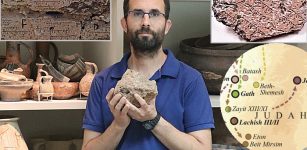 Geomagnetic Fields Reveal The Truth Behind Biblical Narratives
Archaeology | Oct 25, 2022
Geomagnetic Fields Reveal The Truth Behind Biblical Narratives
Archaeology | Oct 25, 2022 -
 The Mystery Of Ancient Ever-Burning Lamps
Ancient Technology | Sep 10, 2024
The Mystery Of Ancient Ever-Burning Lamps
Ancient Technology | Sep 10, 2024 -
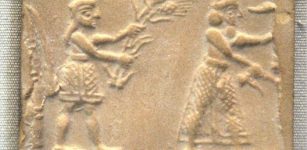 Who Was The Sumerian Ensi?
Featured Stories | Jan 24, 2020
Who Was The Sumerian Ensi?
Featured Stories | Jan 24, 2020 -
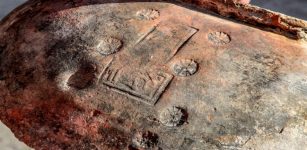 2,500-year-old Saka settlement found in Lake Issyk-Kul: could this be where St Matthew is buried?
Civilizations | Sep 4, 2015
2,500-year-old Saka settlement found in Lake Issyk-Kul: could this be where St Matthew is buried?
Civilizations | Sep 4, 2015 -
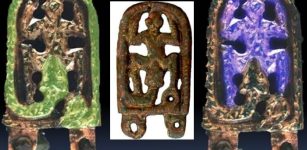 Unique Medieval Bronze Buckle Of A Snake Devouring A Frog-Like Creature Found In Brno, Czech Republic
Archaeology | Dec 13, 2023
Unique Medieval Bronze Buckle Of A Snake Devouring A Frog-Like Creature Found In Brno, Czech Republic
Archaeology | Dec 13, 2023 -
 Biblical Jonah Visits Nineveh – The Evil City
Biblical Mysteries | Nov 9, 2018
Biblical Jonah Visits Nineveh – The Evil City
Biblical Mysteries | Nov 9, 2018 -
 Mysterious Ancient Lost Civilization Of North America Had Interest In One Particular Constellation
Civilizations | Apr 17, 2018
Mysterious Ancient Lost Civilization Of North America Had Interest In One Particular Constellation
Civilizations | Apr 17, 2018 -
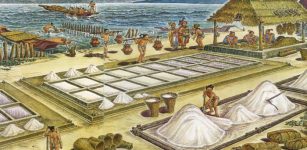 Ancient Maya Saltworks: Salt Was A Commodity Or Money In Classic Maya Economy
Archaeology | Mar 23, 2021
Ancient Maya Saltworks: Salt Was A Commodity Or Money In Classic Maya Economy
Archaeology | Mar 23, 2021 -
 First Americans Reached The Continent 15,000 Years Earlier Than Previously Thought – Chiquihuite Cave Reveals
Archaeology | Jul 22, 2020
First Americans Reached The Continent 15,000 Years Earlier Than Previously Thought – Chiquihuite Cave Reveals
Archaeology | Jul 22, 2020 -
 Homo Bodoensis Is A New Species Of Human Ancestors Who Lived Half A Million Years Ago
Archaeology | Nov 1, 2021
Homo Bodoensis Is A New Species Of Human Ancestors Who Lived Half A Million Years Ago
Archaeology | Nov 1, 2021 -
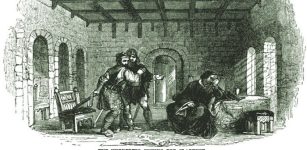 On This Day In History: George Plantagenet Privately Executed At The Tower Of London – On Feb 18, 1478
News | Feb 18, 2017
On This Day In History: George Plantagenet Privately Executed At The Tower Of London – On Feb 18, 1478
News | Feb 18, 2017 -
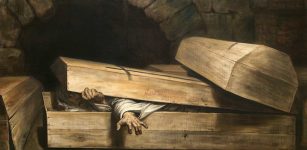 Older Than Dracula: In Search Of The English Vampire
Myths & Legends | Dec 9, 2022
Older Than Dracula: In Search Of The English Vampire
Myths & Legends | Dec 9, 2022 -
 When Did Humans Start Using Roads And What Civilization Built The First Paved Roads?
Archaeology | Oct 26, 2022
When Did Humans Start Using Roads And What Civilization Built The First Paved Roads?
Archaeology | Oct 26, 2022 -
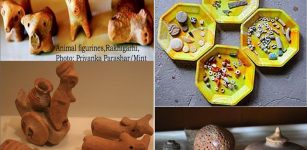 Early Harappan Cultures Can Solve Mysteries Of Several Lost Cities Of Indus Valley Civilization
Artifacts | May 30, 2019
Early Harappan Cultures Can Solve Mysteries Of Several Lost Cities Of Indus Valley Civilization
Artifacts | May 30, 2019 -
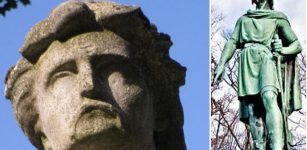 Rollo: Viking Sea Lord, Chieftain, Lone Wolf And The First Ruler Of Normandy
Featured Stories | Dec 6, 2023
Rollo: Viking Sea Lord, Chieftain, Lone Wolf And The First Ruler Of Normandy
Featured Stories | Dec 6, 2023 -
 Egyptian Tomb Of The Two Brothers – DNA Solves Ancient Egyptian Mystery
Archaeology | Jan 17, 2018
Egyptian Tomb Of The Two Brothers – DNA Solves Ancient Egyptian Mystery
Archaeology | Jan 17, 2018 -
 Treasure Trove Of Spices Found On The Sunken Medieval Ship Gribshunden
Archaeology | Feb 11, 2023
Treasure Trove Of Spices Found On The Sunken Medieval Ship Gribshunden
Archaeology | Feb 11, 2023


